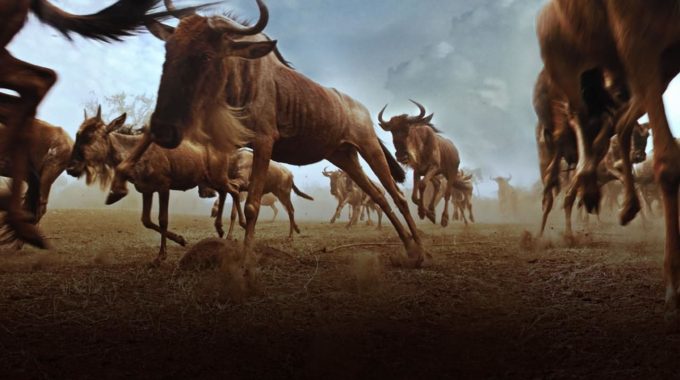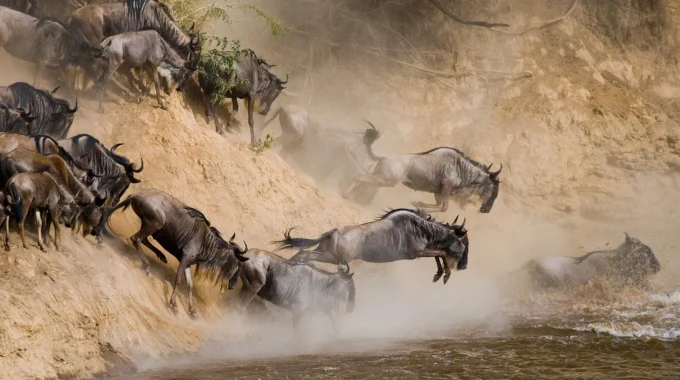A Kenya safari cost can vary significantly based on several factors, such as the season,…
What is the best time to see the Great Migration?
What is the best time to see the Great Migration? – The Great Wildebeest Migration is a year-round event, but the timing and the best experiences depend on which part of the migration you’re hoping to witness. The migration follows a circular route through the Serengeti in Tanzania and the Maasai Mara in Kenya, and the animals move in search of fresh grazing and water. Here’s a breakdown of the best times to see different aspects of the migration:

1. River Crossings (June to October)
- Best for: Dramatic river crossings and predator-prey interactions
- The most iconic and dramatic part of the migration happens when the wildebeest cross the Mara River (and other rivers) in July and August, often facing predators like crocodiles and lions. This is the most popular time to visit for those hoping to witness these thrilling river crossings, which are some of the most spectacular wildlife moments in the world.
- When to visit: July through September is the peak period for river crossings. Large herds of wildebeest typically reach the Mara River in July, with crossings continuing into August and September.
2. The Calving Season (January to March)
- Best for: Watching newborn calves and predator interactions
- From January to March, the migration is in the southern Serengeti region, where the wildebeest give birth. The calving season falls during this time, making it one of the best times to see baby wildebeest, who are frequently present in large numbers. It’s a period of high drama as predators like lions, cheetahs, and hyenas take advantage of the vulnerable young.
- When to visit: The calving season is from January to March, with the peak around February. This time is also less crowded compared to the peak season, which makes it a great choice for those who want to experience the migration without the large tourist crowds.
3. The Migration’s Early Stages (April to June)
- Best for: Fewer crowds and lush landscapes
- In April and May, the migration is still in the southern Serengeti, with wildebeest and other grazers starting to leave their calving grounds and head north as the grass in the south begins to dwindle. May is typically the tail end of the short rainy season, and while it is the start of the migration’s northward movement, some areas may be difficult to access due to rains.
- When to visit: June marks the beginning of the long dry season, and the migration picks up pace as herds start to move towards the central Serengeti and the western corridor. By late June, the wildebeest are usually heading towards the northern Serengeti in preparation for the Mara River crossings.
4. The Full Migration Route (Year-Round)
- While the exact timing can vary slightly each year, the migration follows a predictable pattern each season, and there’s always something to witness at different times:
- April to May: The herds are typically still in the southern Serengeti, and the landscape is lush from the rains.
- June to October: Wildebeest are further north, and the river crossings are the highlight, especially in July and August.
- November to December: After crossing into Kenya’s Maasai Mara, the herds start heading back south as the rainy season begins in the south. The herds begin to move back to Tanzania in preparation for another cycle.
Summary of Best Times:
- For river crossings and predator action: July to October (especially July and August).
- For calving season and newborn wildebeest: January to March, with February being the peak for births.
- For fewer crowds and lush landscapes: April to June (though some rains may make access difficult, especially in the southern Serengeti).
In general, June through October is considered the best time for most visitors due to the availability of river crossings, the dry weather, and abundant wildlife, but if you’re looking for quieter times or specific experiences like calving, there are also advantages to traveling in the off-peak months like January to March.



